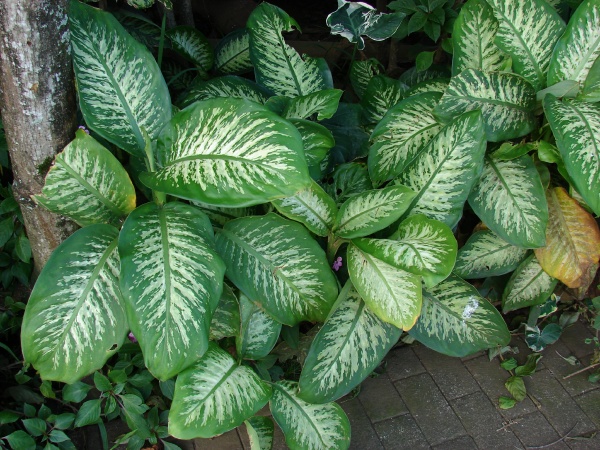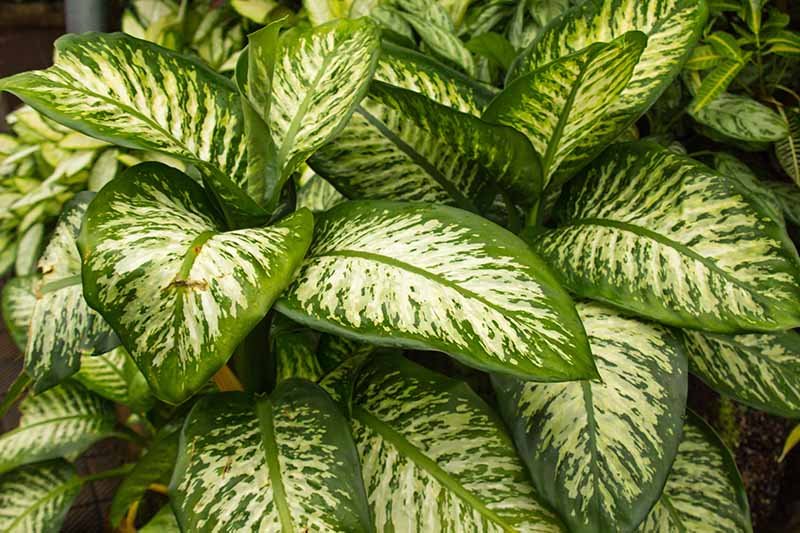You’ll be surprised at how easy it is to care for a dieffenbachia plant once you learn how to nurture it. It’s adaptable to various levels of light and environments that would surprise you if you saw a dieffenbachia seguine houseplant.
Given below is the complete guide on the dieffenbachia seguine like how to care for a dieffenbachia seguine, benefits, common name, and price of the dieffenbachia plant.
This plant can be grown indoor or outdoor both. You just need to take care of the plant properly as mentioned below:
Dieffenbachia Seguine Features
The name Dieffenbachia comes from the German word meaning “deaf” and refers to a plant in the Iridaceae family. It is commonly known as Dumb Cane. The genus consists of herbaceous plants that range in color and form across the world.
The leaves are small, pointed, ovate, and green, cream, or white. A big dieffenbachia with leaves 20 inches long can reach up to 10 feet tall. However, in typical indoor circumstances, plants rarely grow to be this big. It is highly poisonous to humans, dogs, and cats.
Here are some important money plant benefits that you should know before bringing it home.
Dieffenbachia Seguine Care
The most typical problem with growing dieffenbachia is excessive dampness. The dieffenbachia plant is susceptible to too much water, as are other plants at home.
- Plant the dumbcane in a moisture-retentive soil.
- Make sure the dirt is dry an inch (2.5 cm.) deep before watering a dieffenbachia plant after watering it.
- Incorrect lighting might also induce various problems with your dieffenbachia plant.
- When you’re growing dieffenbachia indoors, having enough filtered sunlight is critical.
- To keep the dieffenbachia from leaning toward one side and receiving insufficient light, turn it regularly.
- Check the particular plant’s light requirements when growing dieffenbachia of various cultivars.
- Dieffenbachia varieties that thrive in bright light need less filtered light.
- Fertilize dieffenbachia twice a month to stimulate growth and a robust plant.
- A high-nitrogen houseplant food can be used at half strength.
- Refer to spider plants benefits if you plan to bring a spider plant at home.
Dieffenbachia Seguine Benefits
Dieffenbachia is not only beautiful to look at, but it has many benefits that you can enjoy. The Death Valley beauty plant, with its distinctive leaves, is a wonderful choice for bedrooms. It gives off oxygen, especially at night. It also eliminates formaldehyde, benzene, and trichloroethylene from the environment.
Also read: Snake plant benefits and its varieties here.
Propagate Dieffenbachia Seguine
Dieffenbachia plants may be propagated in a variety of ways.
To divide by root, follow these steps:
- In the spring, offsets can be divided (keeping some roots), and they may be put in their pots.
- If you choose this approach, be sure to avoid damaging the root systems of the parent plant and limit your activities to a single branch.
Note: bring areca palm plant at home as it is a good source of oxygen. Here are some important areca palm plant benefits that you should know about.
To grow a stump, follow these steps:
- With a rooting hormone, the top of an older dieffenbachia can be removed and potted into fresh potting soil.
- The stump will sprout new leaves.
- Remove all of the older leaves as soon as new leaves appear.
To chain:
- The tube of the cane may be sprouted by placing it on its side in moist potting soil.
- As the pieces begin to grow roots, the leaves will sprout.
Consider reading: Croton Plants and how to grow it indoor and outdoor.
Potting Dieffenbachia Seguine
Planting and watering do not have to be difficult. The perfect location for your dwarf/micro-propagation dieffenbachia is in a bright, sunny window or on the patio where it will get some light. Once planted, you needn’t worry about their water supply; they’re happy in any climate as long as they receive enough direct sunlight.
Because of their small size, however, they require yearly repotting unless grown in a container (in which case you’ll still have to report them once a year). The Dieffenbachia King variety requires no special care – simply water every two weeks after planting out with warm water during the summer and autumn months.
Also read: vastu direction for tulsi at home
Problems with Dieffenbachia Seguine Plant
- The death of the dieffenbachia’s bottom leaves is typical.
- The dieffenbachia plant is also susceptible to scale, mealybugs, and whiteflies. Aphids may also be a problem.
- If you have a problem with your dieffenbachia plant’s leaves turning red and falling off, don’t use pesticides on it since this frequently makes the situation worse.
- If you see water droplets on your dieffenbachia plant, you might wonder why it is dripping. This is the result of the transpiration process in which most plants are engaged.
- Keep the dumbcane plant away from curious children and pets while it’s still young since they might be tempted to taste it.
Dieffenbachia Seguine Price
Dieffenbachia plants are moderately priced, with most plants ranging from Rs. 150 per plant to Rs.1585 per piece.
You can also go for swiss cheese plant as an alternate to dieffenbachia seguine plant as it is also a good source of oxygen.
Conclusion
The dieffenbachia is a flowering plant that may be green, white, or variegated in color and grows quickly. It is highly poisonous to people, dogs, and cats. The majority of dieffenbachia plant issues can normally be resolved rapidly. The most typical problem with growing dieffenbachia is excessive dampness.
To prevent this, be sure to water the plant correctly and place it in an environment with adequate light. Dieffenbachia plants also benefit from being fertilized twice a month.



This is new knowledge for me. I had never heard about this plant before. Thats why I love your blogs. There is always something new to learn.